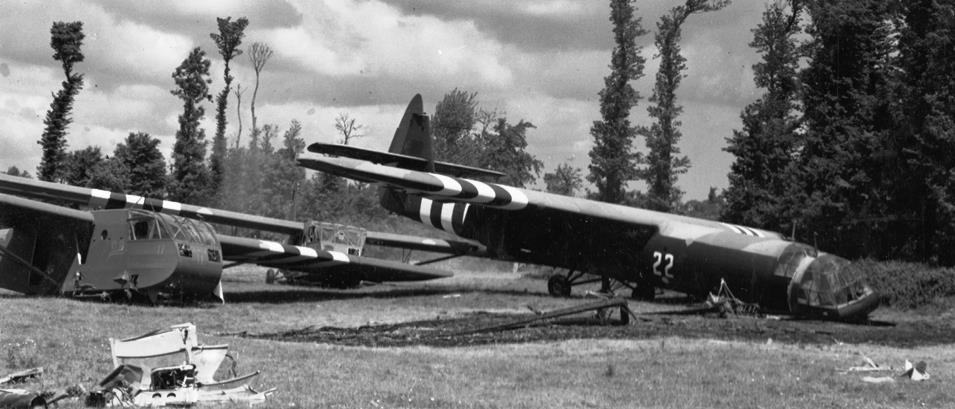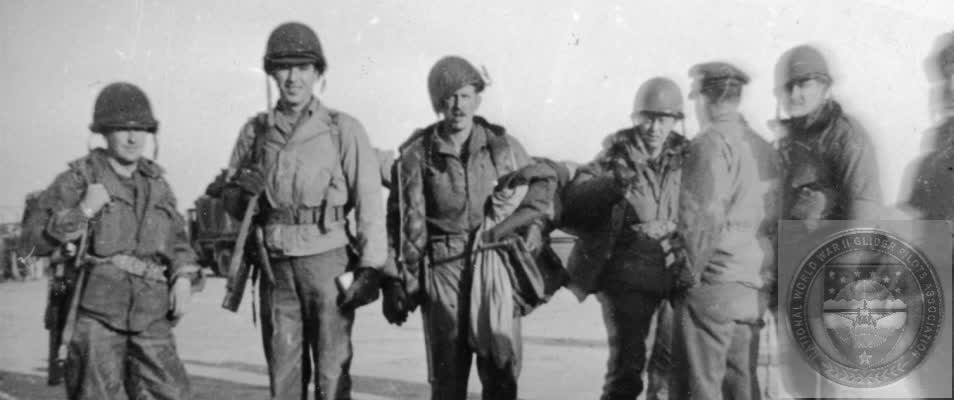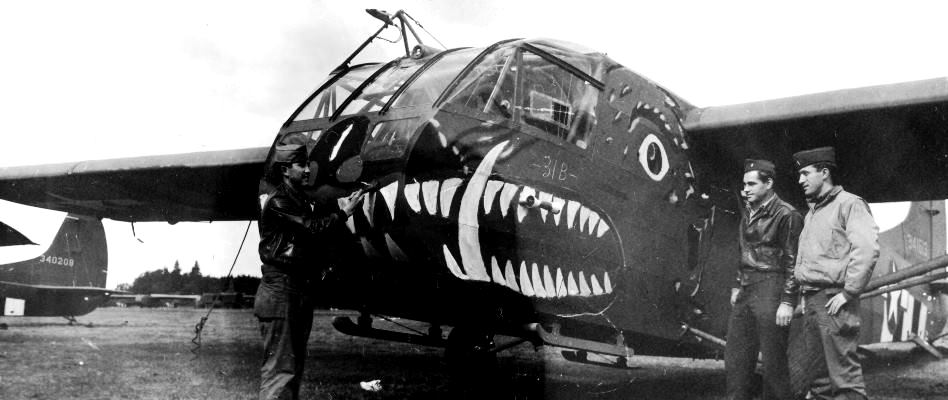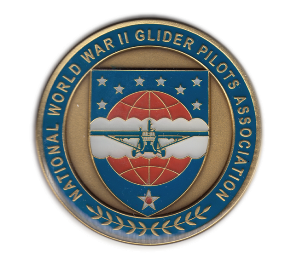National WWII Glider Pilots AssociationLegacy Organization of veterans National WWII Glider Pilots Association. | ||
EIGHT MISSIONS - SerialsFew Americans, including a majority of those who served in the armed forces, were aware that the United States employed combat gliders during World War II. In fact, military gliders were used in virtually every major campaign starting with Operation Husky (Sicily: 9 July 1943), Operation Thursday (Burma: March 1944), Operation Overlord (Normandy: 6 June 1944), Operation Dragoon (Southern France: 15 August 1944), Operation Market-Garden (Holland: 17-25 September 1944), Operation Repulse (Bastogne: December 1944-January 1945) and Operation Varsity (Rhine River Crossing: 24 March 1945). The combat glider, America’s first stealth aircraft, was one of the best kept secrets of WWII. Press releases were few and far between and because their deployment was classified almost nothing was written about military glider operations until long after the war ended. The mission of the combat glider was to land airborne infantrymen and/or hardware behind enemy lines, often in darkness, and usually in support of paratroop landings. To understand the magnitude of the glider combat role in World War II one has only to look at the eight combat missions in which gliders were used. (1) Sicily mission: 136 American CG–4A (15–place) combat gliders were used for this mission that took place in July 1943. It was a British mission with British glider pilots flying American gliders. Eight (8) British Horsa gliders (30-place) were also used. Prior to mission day, thirty (30) American glider pilots volunteered to fly as copilot on the mission. All of the objectives were taken even thought some of the tow planes and gliders were mistakenly shot down by our own naval vessels. Six (6) American glider pilots were killed and eighteen (18) wounded. This was the first World War II invasion in which American gliders and glider pilots were used. Some valuable lessons were learned from this mission. (2) Burma Mission: 68 CG–4A combat gliders were used during Operation Thursday that took place in March 1944. Most of the gliders were grossly overloaded and only thirty–one (31) made it from India to the landing zone (LZ) (Broadway) in Burma. Because of the excessive weight some of the gliders broke loose from their tow planes and never reached their destination. Eleven (11) glider pilots were killed and eighteen (18) wounded. Despite the high casualty rate the mission was a success. (3) Normandy Mission: 517 CG–4A combat gliders participated in Operation Neptune that took place on D-Day, 6 June 1944. Because the gliders were forced to land in small fields, some less than 400 feet in length, many of them crashed on landing, but few of the occupants were injured and only a minimal amount of the cargo was damaged. A fully loaded CG–4A normally required approximately 600 feet of landing space. Nevertheless, the mission was a complete success. Forty–four (44) glider pilots were killed and more than a score were injured, many seriously. The movie, “The Longest Day”, featured only British gliders, but actually more American CG–4A gliders were used than the British Horsa and Hamilcar (tank carrier) gliders. (4) Southern France Mission: 407 CG–4A combat gliders were used on this mission that took place in August 1944. American forces quickly overcame the enemy making the mission a total success. Twenty-three (23) glider pilots were killed and sixty-three (63) wounded. (5) Holland: More combat gliders were used on this mission than any other during World War II. 1,900 CG–4A combat gliders were used in this multi–day operation beginning on 17 September 1944. 1,618 of the gliders landed safely in the designated landing zones in Holland. Some were released over Germany by mistake and the occupants were never heard from again. Forty (40) glider pilots were killed, thirty–seven (37) wounded, and sixty–five (65) were Missing–In–Action (MIA). The overall mission failed, but the Americans objectives were successfully taken. This was the mission that inspired the movie, “A Bridge Too Far.” (6) Ardennes (Battle of the Bulge): 61 CG–4A combat gliders were used in this operation. Glider pilots were the first to come to the rescue of the beleaguered 101st Airborne Division, not General Patton and his tanks as history asserts, but they received virtually no notice in the newspapers for these suicide missions. Four (4) glider pilots were killed and eighteen (18) wounded in this German onslaught. American gliders delivered surgical teams to treat the wounded, artillery ammunition and much needed gasoline for the division vehicles while under intense and deadly enemy ground fire. The casualty rate for men and machines was high, but the mission was successfully accomplished. The mission was researced and written by the Research Team (7) Wesel, Germany Mission: This was the largest one-day use of American gliders in combat during WWII. 906 CG–4A gliders were used on this mission that took place on 24 March 1945. American gliders crossed the Rhine River for the first time and the casualty rate was high. Eighty–Eight (88) glider pilots were killed, two hundred forty (240) were wounded and thirty–one (31) were Missing–In–Action (MIA). This was the last large scale use of gliders during World War II. Germany surrendered two months later. (8) Luzon, Philippine Islands Mission: (8) Luzon, Philippine Islands Mission: This small scale American combat mission was the only one that took place in the Pacific area. Only six (6) CG–4As were used and one (1) CG-–3A (42–place glider). The mission was a complete success and there were no casualties. This was the last use of American gliders in combat during World War II. |
217 Killed in Action.
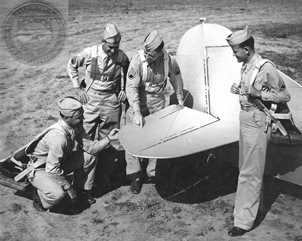
Caption on back: Giving student the Dope about control surfaces.
One of the students is Joseph H Parente, who went on the fly the CG-4A on Sept. 18, 1944, Holland (MARKET):Took off at 12:07 good tow, Slight damage done to nose while landing. We unloaded our jeep and hooked to a trailer and was at CP within one half hour. There was heavy mortar fire on L.Z. [and] some small arms fire. Exacvuation started Sept. 24, arrived home station Sept. 27, 1944, 15:00. --signature Joseph H Parente, 48th TCS / 313th TCG.



